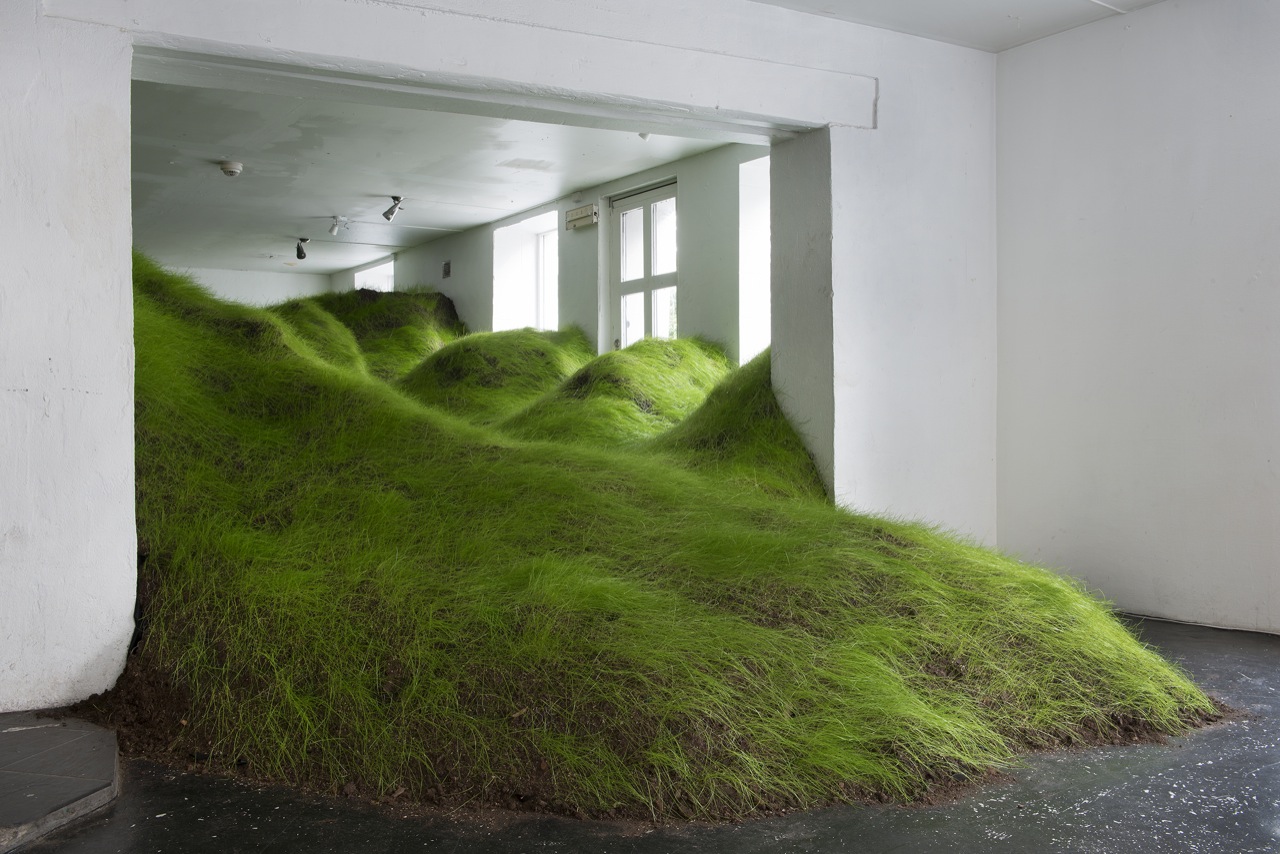Kristian Nygaard, Installation at NoPlace Oslo. 2014.
Noplace in Oslo, discover the institution website
« The One Thing After Another
Per Kristian Nygaard at KHM Gallery
by Wojciech Olejnik
Per Kristian Nygaard’s exhibition The One Thing After Another explores the influence of social and political ideologies on public and private space, on its material composition, on its architecture. Consider House (2010), a model of a high-rise building constructed out of unfinished plywood. It towers over the viewer like a modernist sculpture, simple and elegant in its design and use of material. Such simplicity marks much modernist city planning and architecture, which seem to embody a bare rationality developed out of a rigorous consideration of the placement and arrangement of objects. This approach involves the implementation of an overarching order, where even ornamentation stems from its very structure, according to an inner logic. House (2010) presents the deduced, bare essentials of such a logic: form and material. Presented as a model it acts as a demonstration of the original design, of the formal concerns that precede the eventual completion of the structure, and in its unpainted state it brings attention to the raw material used in its construction.
It is no secret that in modernist architecture the materials used were often left exposed, that they themselves symbolized new engineering feats, but also represented a new modern age. Nygaard’s work such as Unapologetic Architect II (2010), brings attention to certain forms and shapes that have also been crucial in establishing the modernist aesthetic. This piece is a drawing of an imagined building, which compresses rectangular shapes to form a complex architectural structure, reminiscent of a mall or some other social space. A uniform grid of windows covers the walls and the roof, with steel frames and glass convening in an angular geometric reality of cubes and squares. Unlike a circle or a triangle, the cube is infinitely divisible into the same shape, into equal portions, and thus it may represent equality itself. Here, the clean lines and Lego-like units that define this public place suggest a uniformity of the social body, of its infinite mass, and how its wealth and property can be portioned into discrete, equal yet separate units. »
Entire Article / Suite de l’article
Text: The One Thing After Another. by Wojciech Olejnik – Interview in Måg magazine 2011. Were do artists come from, by Per Kristian Nygård 2011



